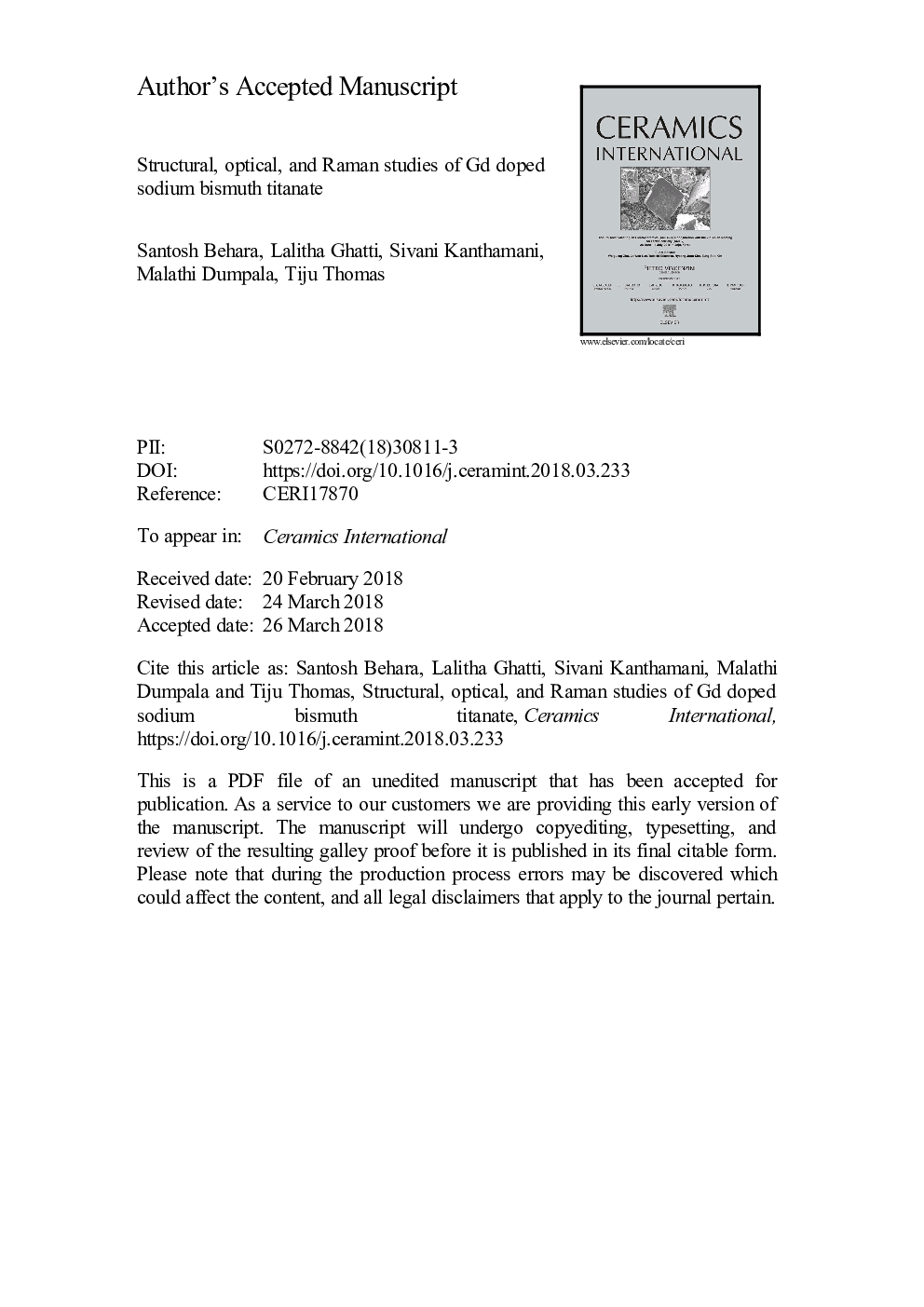| Article ID | Journal | Published Year | Pages | File Type |
|---|---|---|---|---|
| 7886743 | Ceramics International | 2018 | 25 Pages |
Abstract
The effects of gadolinium (Gd) on lead free sodium bismuth titanate (Na0.5Bi0.5TiO3, NBT) ceramics are investigated. X-ray diffraction (XRD) studies indicate that perovskite phase (rhombohedral, R3c) is formed for all Gd doped NBT (Gdx:NBT) compositions (xâ¯=â¯0, 0.02, 0.04, 0.06, 0.08). XRD peak shifts to the higher angles for all compositions except for xâ¯=â¯0.08. Amphoteric nature of Gd in NBT sites are observed i.e., it occupies Bi-site up to xâ¯=â¯0.06 and then distributes to Ti-site. Octahedral distortion (c/a) increases in the range 0.02â¯â¤â¯xâ¯â¤â¯0.06 and then decreases. Raman spectra suggest that the introduction of Gd+3 ion induces structural changes without disturbing the long range order. The material can be readily excited using UV (360â¯nm) and shows emission peaks at ~592â¯nm and 687â¯nm. Optical property evaluation indicates that the lowest band gap (Eg = 2.78â¯eV) is observed at xâ¯=â¯0.08. When xâ¯>â¯0.04, the photoluminescence (PL) intensity decreases indicating the onset of concentration quenching. The critical energy distance (found to be 14â¯Ã
) and Dexter's theory based analysis indicate that concentration quenching is attributable to multipole-multipole (specifically dipole-dipole) interactions in the system. Commission International de Eclairage (CIE) chromatic color coordinates are reported for all doped systems; the observed patterns mirror PL analysis results. For instance, PL intensity shrinks beyond 4â¯at%; this corresponds to a regression in the CIE trajectory with respect to concentration.
Related Topics
Physical Sciences and Engineering
Materials Science
Ceramics and Composites
Authors
Santosh Behara, Lalitha Ghatti, Sivani Kanthamani, Malathi Dumpala, Tiju Thomas,
